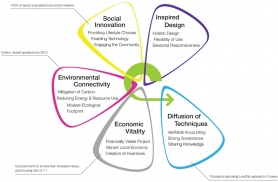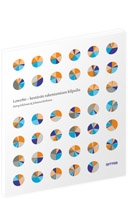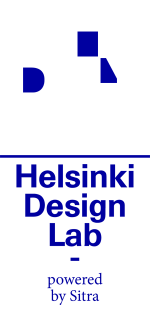Low2No
-
Low2No is a design and construction project which seeks to deliver a more sustainable built environment, and lays a foundation for ecological urban living. Low2No is designed to engage the existing city; balance economy, ecology and society through strategic investments and interventions; and catalyze the long term market transformation away from energy and material intensive urbanism.
The term “Low2No” originates from our belief that a gradual and iterative transition from low carbon to no carbon city building is a more viable and resilient approach to the sustainability challenge than building new eco-cities on uncontested ground. The model, and its first iteration in a city block in downtown Helsinki test the regulatory, financial and cultural barriers to low carbon building, and work to overcome them through targeted projects, investments, events and partnerships. For instance, one of the project’s early successes was to work with the authorities to make multi-story timber construction legal in Finland, providing future projects with the possibility to use low carbon building materials, whilst opening a new market to the Finnish forest industry.
By building a city block in partnership with private companies we demonstrate that broader built environment will become more sustainable only through achieving social and environmental objectives with economically viable solutions. In many of the world's cities, this means navigating an often messy regulatory environment, overcoming the challenges and inertia of legacy and engaging an expanded group of stakeholders to ensure that solutions are possible, impactful and lasting. After all, building sustainable cities is no longer a technological challenge—we have the technology in hand—it is a cultural challenge.
Low2No approaches the city from the side, oblique, bottom and top. Policy, finance and culture are the Low2No designer's central capacities.
-
By the numbers...
500 residents
5 buildings
22,000 sq meters
€60M investment
7 business
-

The Low2No Sustainability Framework organizes the governing principles of the project into five main areas.
-

Informed consumption: Early user interface developed by Experientia allowing users to view their energy and carbon profile.
-

Early rendering of apartments
© 09.2011 Sauerbruch Hutton
-

Co-creating new housing models: Experientia conducted workshops with future residents
-

Carbon mitigation via investments in renewable energy organized at the district scale.
-
Project details
-
Partners
Client team: Finnish Innovation Fund; SRV (commercial developer); VVO (social housing developer)
Design team: Arup; Sauerbruch Hutton Architects; Experientia
-
Sitra/HDLs Role
Designed and funded Low2No competition; lead project team through city block design phases; initiated related projects (e.g. Open Kitchen)
-
Schedule
Fall 2008 Sitra develops initiative vision and competition model
March 2009 Low2No competition officially launched
May 2009 Five Finalist selected from pool of 75 teams responding globally to the competition RFQ.
September 2009 Winning team announced: Arup, Sauerbruch Hutton Architects and Experientia.
November 2009 Sitra, SRV, and VVO sign contract with Arup lead team.
May 2012 Sitra decides to divest from investing in the Low2No “Airut” development
Fall 2013 Low2No “Airut” block development rights transferred to partners SRV & VVO
-
What's happening now?
In May 2012 Sitra decided to divest from the Low2No “Airut” development project in Jätkäsaari. As of Q2 2013 development of the city block is continuing under the control of our partners SRV and VVO, under the direction of the City of Helsinki.
-
Outcomes (as of June 2013)
-
Low2No was about developing a market for sustainable development with the objective of putting Finland on a more sustainable development path. While Low2No was successful in proposing a model to transition existing cities, it also created other successes.
-
Changing fire codes to allow for large scale wood construction in Finland
A particularly significant one was the change in fire codes around wood. Sitra was part of a broad coalition to change building codes to allow for the use of structural wood in large scale construction. Low2No had an explicit objective to address the embodied carbon question and change the regulatory environment. As such it became one of the vehicles to accelerate the change, with clear systemic effects in Finland.
Deemed a fire hazard, building codes had prevented the use of wood in Finland, helping create a concrete-dominated construction industry. Lowering the overall carbon of a given community means looking at the energy used to support the community’s daily operational needs (such as heating and light) but also looking carefully at the embodied energy & carbon of materials. Concrete has a significant carbon footprint. Wood on the other hand not only has a much smaller footprint, but also has significant implications in increasing finland’s overall carbon sink capacity but also has significant economic impact in reviving a languishing but vital forest industry.
-
Low2No competition: An innovative procurement model
Public sector organizations like Sitra are subject to public procurement laws. Most public procurement is built to help organizations procure known and specifiable solutions: chairs, pens, service subcontractors. But what happens when you know you have a challenge to solve but don’t know how to specify it? In Low2No we developed a model to procure an approach rather than the traditional solution. We knew that we needed highly interdisciplinary teams to help us solve this challenge so we developed a two phased competition: 1) an RFQ where we chose 5 finalist based on the breadth, depth, and complementarity of their experiences, and 2) resourced the finalist to develop a strategy (not a solution!) to help us work through the challenge of creating a low2no carbon development project. We procured the services of the team that offered us the most robust strategy. Procuring a team based on their strategy (rather than the shape of their building solution) was a great innovation in our mind.
-
Global design competition (2009)
-
It is clear that no single organization, profession or nation can achieve the goals of sustainable global development. It will require an architecture of solutions including low/no carbon buildings; sustainable economic systems; enhanced mobility; sustainable planning and energy policies; resilient social systems (access, equity and capacity), among countless others.
Recognizing the need and opportunity to improve sustainable building practices, Sitra launched the Low2No Sustainable Development Design Competition in 2009. The goal was to attract and identify the best team to design a large mixed-use building complex as a way to explore the ecosystem that shapes the built environment and develop interventions that would nudge the city toward a low carbon future.
-
Given that the repertoire of sustainable urban development models are limited, especially for existing cities, Sitra found no ready-made team.
First we asked "who?" We believe that identifying the best team and approach is the key factor impacting the robustness of the final solution.
Then we asked "how?" Our competition was designed to seek approaches for four central objectives applied at the scale of a city block:
- Low—and one day no—carbon emissions
- Energy efficiency
- High architectural, spatial and social value
- Sustainable materials and methods
-
For more resources related to this competition, including downloads for the Request for Qualifications, Briefing, and Competion Rules please visit the Low2No website competition section
-
Five team were selected from a pool of more than 70 to compete in the Low2No competition. Below are summaries of each project, as well as brief presentations and other documentation.
The C_life proposal led by Arup would go on to win the competition and subsequently became the design team to help shape the Low2No development project in Jätkäsaari, Helsinki called the “Airut” block.
-
C_Life (winner)
By Arup, Sauerbruch Hutton Architects, Experientia & Galley Eco Capital
-
Rebuilding 2.0
By REX/Croxton Collaborative/NOW, Transsolar Energietechnik, Magnusson Klemencic Associates, Bureau Bas Smets, 2×4, Arup New York, Front & Jonathan Rose Companies
-
Cradle of Innovation
By WSP Group, Heatherwick Studios, B&M Architects, JK MM Architects, Space Syntax, Helsinki University, AA Palmberg Ltd, Pekka Himanen & Pauli Aalto-Setälä
-
ReciproCity
By Bjarke Ingels Group BIG, Vahanen, ARUP Foresight Innovation, Transsolar Energietechnik, Anttinen Oiva Arkkitehdit AoA, Masu Planning, Passiivitalo.fi, Pasi Mäenpää & Mikko Jalas
-
Low Carbon High Urban
By Peter Rose & Partners, Michael Van Valkenburgh Associates, Guy Nordenson and Associates, Transsolar Climate Engineering (Matthias Schuler), Mobility in Chain & Architectural Research Office
-
More resources
-
A New Direction for Transport Planning
By Federico Parolotto & Francesca Arcuri
-
Making Sustainable Cities Investable
By David Wood
-
Green Markets Must Be Created By You
By Tuuli Kaskinen & Roope Mokka
-

Low2No: Kestävän rakentamisen kilpailu
Harry Edelman, a member of the competition jury, and Johanna Kirkinen of Sitra wrote this summary of the five competition proposals in Finnish.
-

Low2No: Strategies for Carbon Neutrality
Professor Martin Bechthold from the Harvard Design School, with help from researcher Anthony Kane prepared a case study of the Low2No competition. Over the fall of 2009 and spring 2010, the case team made three trips to Helsinki, conducted 52 interviews with participants and compiled a mass of data to uncover what really happened.
What has emerged is an exceptional study of Low2No's novel competition methodology and its participants, and the impact it had on their practice and the work of Sitra.
-

Helsinki Street Eats
Bryan Boyer and Dan Hill of Sitra discuss the history and current state of casual food in Finland, and look at how this may be inflected to improve environmental, social, and economic outcomes.
